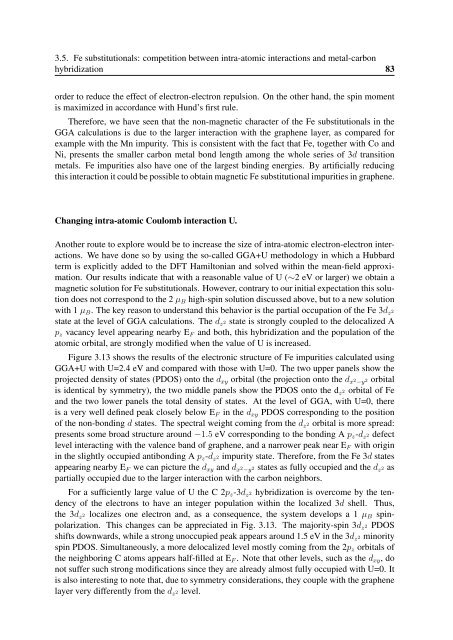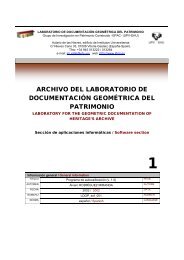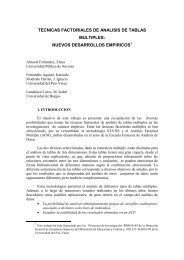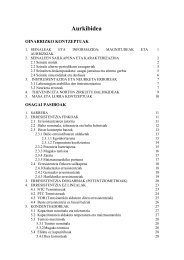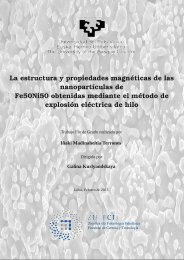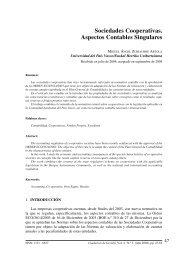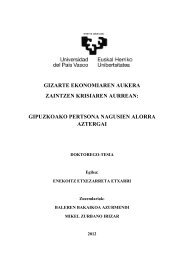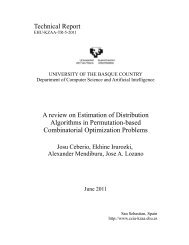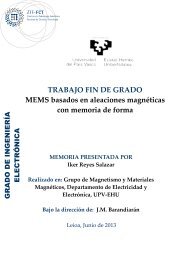Ï - ADDI
Ï - ADDI
Ï - ADDI
- No tags were found...
You also want an ePaper? Increase the reach of your titles
YUMPU automatically turns print PDFs into web optimized ePapers that Google loves.
3.5. Fe substitutionals: competition between intra-atomic interactions and metal-carbonhybridization 83order to reduce the effect of electron-electron repulsion. On the other hand, the spin momentis maximized in accordance with Hund’s first rule.Therefore, we have seen that the non-magnetic character of the Fe substitutionals in theGGA calculations is due to the larger interaction with the graphene layer, as compared forexample with the Mn impurity. This is consistent with the fact that Fe, together with Co andNi, presents the smaller carbon metal bond length among the whole series of 3d transitionmetals. Fe impurities also have one of the largest binding energies. By artificially reducingthis interaction it could be possible to obtain magnetic Fe substitutional impurities in graphene.Changing intra-atomic Coulomb interaction U.Another route to explore would be to increase the size of intra-atomic electron-electron interactions.We have done so by using the so-called GGA+U methodology in which a Hubbardterm is explicitly added to the DFT Hamiltonian and solved within the mean-field approximation.Our results indicate that with a reasonable value of U (∼2 eV or larger) we obtain amagnetic solution for Fe substitutionals. However, contrary to our initial expectation this solutiondoes not correspond to the 2 µ B high-spin solution discussed above, but to a new solutionwith 1 µ B . The key reason to understand this behavior is the partial occupation of the Fe 3d z 2state at the level of GGA calculations. The d z 2 state is strongly coupled to the delocalized Ap z vacancy level appearing nearby E F and both, this hybridization and the population of theatomic orbital, are strongly modified when the value of U is increased.Figure 3.13 shows the results of the electronic structure of Fe impurities calculated usingGGA+U with U=2.4 eV and compared with those with U=0. The two upper panels show theprojected density of states (PDOS) onto the d xy orbital (the projection onto the d x 2 −y 2 orbitalis identical by symmetry), the two middle panels show the PDOS onto the d z 2 orbital of Feand the two lower panels the total density of states. At the level of GGA, with U=0, thereis a very well defined peak closely below E F in the d xy PDOS corresponding to the positionof the non-bonding d states. The spectral weight coming from the d z 2 orbital is more spread:presents some broad structure around −1.5 eV corresponding to the bonding A p z -d z 2 defectlevel interacting with the valence band of graphene, and a narrower peak near E F with originin the slightly occupied antibonding A p z -d z 2 impurity state. Therefore, from the Fe 3d statesappearing nearby E F we can picture the d xy and d x 2 −y 2 states as fully occupied and the d z 2 aspartially occupied due to the larger interaction with the carbon neighbors.For a sufficiently large value of U the C 2p z -3d z 2 hybridization is overcome by the tendencyof the electrons to have an integer population within the localized 3d shell. Thus,the 3d z 2 localizes one electron and, as a consequence, the system develops a 1 µ B spinpolarization.This changes can be appreciated in Fig. 3.13. The majority-spin 3d z 2 PDOSshifts downwards, while a strong unoccupied peak appears around 1.5 eV in the 3d z 2 minorityspin PDOS. Simultaneously, a more delocalized level mostly coming from the 2p z orbitals ofthe neighboring C atoms appears half-filled at E F . Note that other levels, such as the d xy , donot suffer such strong modifications since they are already almost fully occupied with U=0. Itis also interesting to note that, due to symmetry considerations, they couple with the graphenelayer very differently from the d z 2 level.


